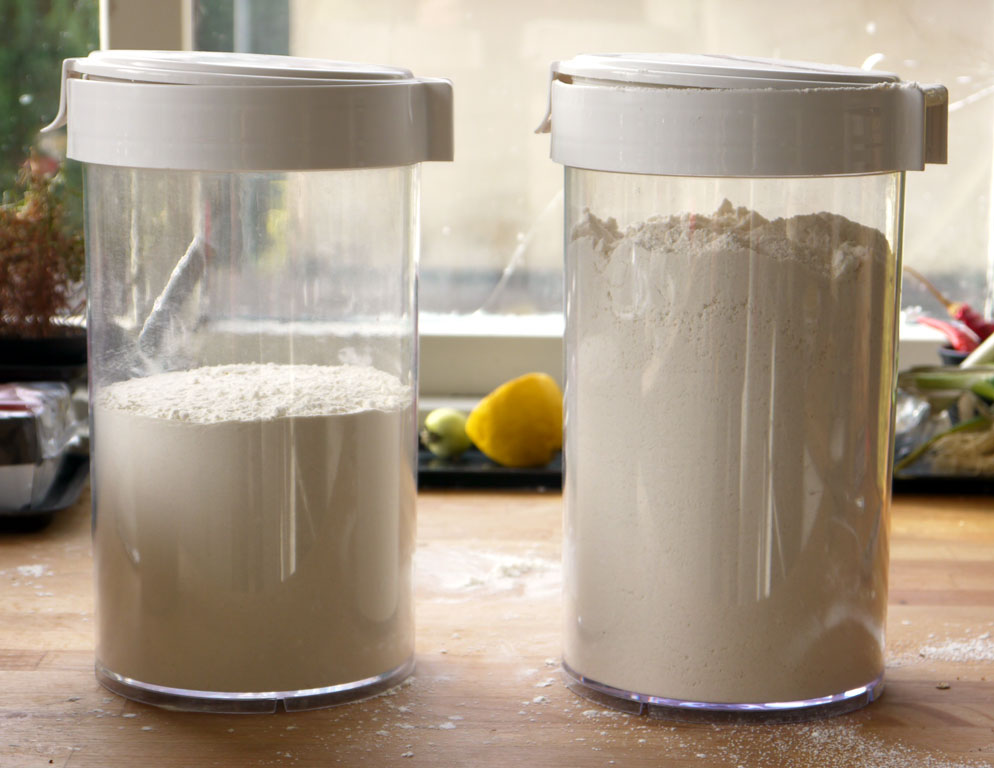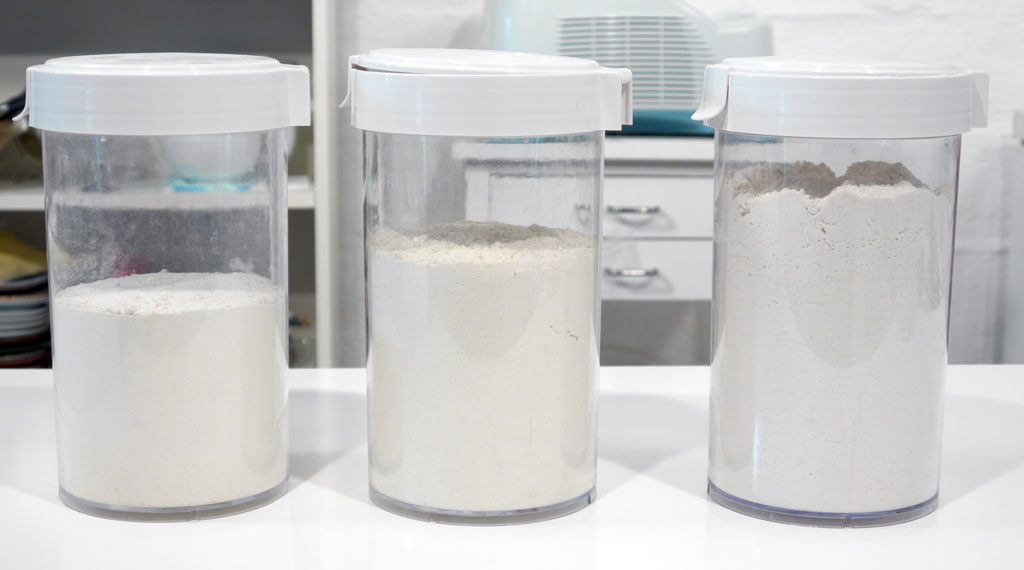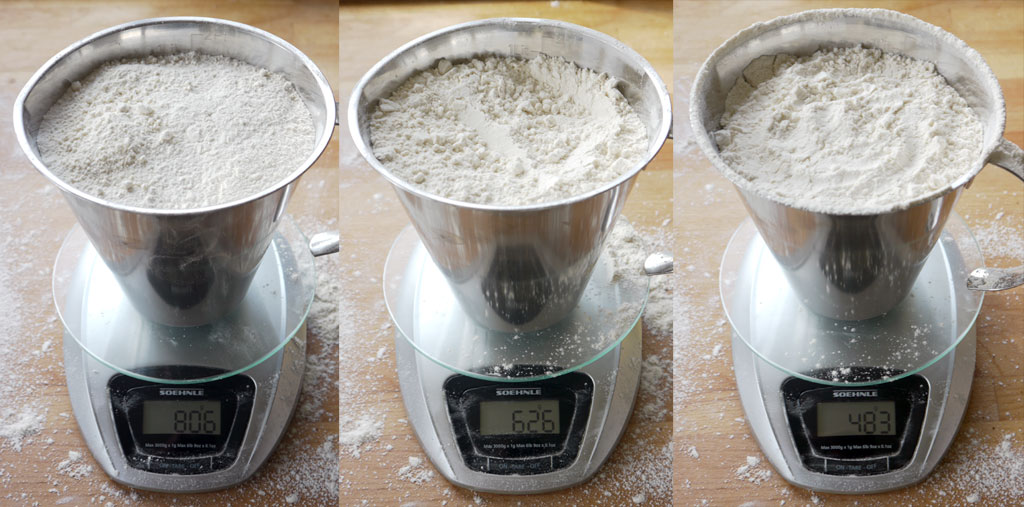Bread Baking Technique #2 - Measuring and Weighing Flour

Flour is made from grain that is ground into a fine powder. When you buy flour it is always in kg, lbs or oz and not in liters, quarts or gallons. That's because the flour grains are very irregular in their shape. So it can be very different how much room flour take up.
Just think of a pile of bricks. If they are just thrown in a pile they take up much more space than if they are stacked neatly up on one and other.
It's the same thing with flour. If one "packages" flour tightly, it will take up much less space than if it is packed very loosely.
Here are my attempts to show how big the difference is, and I actually think it will surprise most of you.
I made two attempts, where I used the same method both times.
1. container (left)
In that I poured the flour straight from the bag into the container. After which I shook it, banged it lightly into the table, etc., so the flour is as tightly packed as possible.
2. container (middle)
In that I just poured the flour straight from the flour bag into the container and shook it lightly once, so that the surface was flat enough for comparison.
3. container (right)
In that I sieved the flour through a fine sieve into the container, so that the flour was as airy and fluffy as possible. This makes it take up as much room as possible. I lightly scraped the peaks to obtain a flat surface for comparison.
1 Test - how much room does 1 kg (2.2 lbs) of flour take up?
I took three identical containers that has room for exactly 3 liters/quarts and poured 1 kg (2.2 lbs) of flour in. I measured it as 1000 grams exactly, on a digital kitchen scale.
I estimated by eye that the 3 methods resulted on volumens ranging from just under 1 ½ liters to 2 ½ liters of flour.

2. Test - what is the weight of 1 liter/quart of flour?
Here, I measured up 1 liter exactly and treated in the same manner as in the 1. test.
1 liter of medium weighs approx. from 450 grams to 800 grams. Most recipes expects 625 to 650 grams per liter. The weight I got when just pouring it from the flour bag.
As you can see, there is huge difference in both tests. Nearly 2:1 between the compressed solid flour and sifted airy flour.
This is important because you cannot know what the flour has been through when you buy it. The more the flour is handled, transported and shaken, the more compressed it gets.

What does this mean in practice?
The short explanation is "always weigh flour with an accurate weight." Then you don't have any measurement problems.
But then again, I have tried as hard as possible to get to the extremes in my tests.
In practice, the weight of the flour that comes straight from the bag is roughly the same every time if you do your part the same way. So I regularly use volumetric measurements (liters) instead of weight when I bake.
When I try out a new recipe, I weigh the flour and pour it into a measuring jug. Thej I write the measurements I get into the recipe beside the weight. If it is easier for me to use a measuring jug I do so in the future.
It also helps with the amount of washing up. I know exactly how much that might be in my various drinking glasses. I have measured them all. Then I can just use one of them to measure in. They are somewhat easier to get into the dishwasher than a large metal bowl. Drinking glasses are also easier to find than the measuring jug, that my kids apparently think need to be in a new place every time they empty the dishwasher :-S
Flour is an organic material, and there may be little difference in the moisture content of the flour. So even when you weigh the flour there is a risk that the weight is not completely true.
There are other inaccuracies too. If you put eggs into your dough, they don't weigh the same every time. So basically you should never trust any baking recipe to be completely true.
Generally it is a good idea when baking to hold back a little of the flour, and then put it in at the end, if the dough is too wet and sticky.
It's these kind of little things that make baking a craft, not a science.
